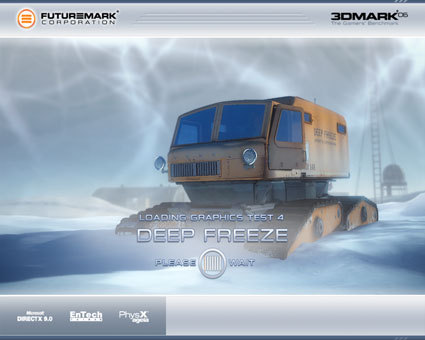3DMark06 Under the Magnifying Glass
Shadow Rendering And High Dynamic Range, Continued
We asked Nick about Futuremark's implementations of shadow techniques.
TOM'S HARDWARE: "The whitepaper describes "Cascade Shadow Maps" utilizing a 2048x2048 shadow map. Won't something like this be taxing on graphics memory?"
Nick: "3DMark06 is targeted at hardware with 256 MB or more of video RAM, so using a 2kx2k shadow map isn't really that big a deal. We wanted to have high quality smooth shadows, and in order to get the quality to the level we want, we needed to use 2kx2k shadow maps. I have no doubt that game developers will also enable gamers to use high-res shadow maps in games. Whether this will be on by default or available as a "maximum shadow quality" setting is of course up to the developer. Modern graphics cards ship with as much as 512 MB of video RAM, so I don't see any reason why not to support high-resolution shadow maps for increased quality."
TOM'S HARDWARE: "One thing that caused controversy with 3DMark05 was its use of two different shadow paths. With card makers constantly bucking for the top spot, even the slightest performance boost is important. Do you feel that even more ways to render shadows makes the comparisons even more controversial?"
Nick: "3DMark06 has support for two different hardware shadow mapping approaches, and two different shadow edge smoothing approaches. We are confident that games will support hardware shadow mapping (if the shadow technique allows it), so it is a logical thing for us to do so as well. The hardware shadow mapping is on by default, because this way the 3DMark06 score correlates better with real-world gaming performance for hardware that supports hardware shadow mapping."
TOM'S HARDWARE: "Where did you implement Percentage Closer Filtering and where was Fetch4 implemented? It appears that Futuremark only used these in the SM2.0 tests. If this is so, why were these hardware accelerations only used in these two tests?"
Nick: "3DMark06 supports hardware bilinear PCF and Fetch4 for the shadows in the SM2.0 graphics tests only. Due to the size and type of the shadow filtering kernel in the HDR/SM3.0 graphics tests we weren't able to use either."
Get Tom's Hardware's best news and in-depth reviews, straight to your inbox.
Current page: Shadow Rendering And High Dynamic Range, Continued
Prev Page Shadow Rendering And High Dynamic Range Next Page CPU Tests Mandatory For A Final Score